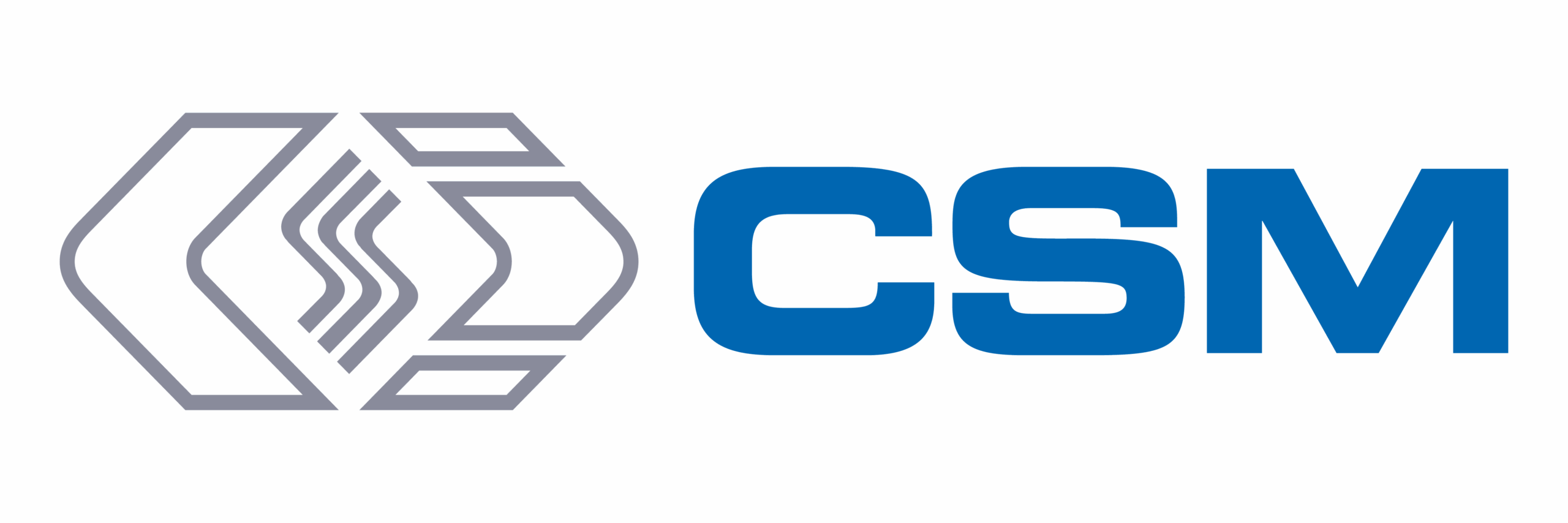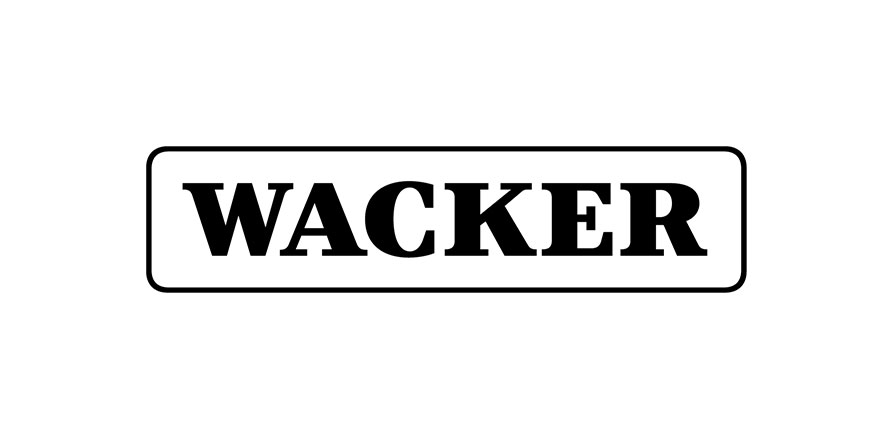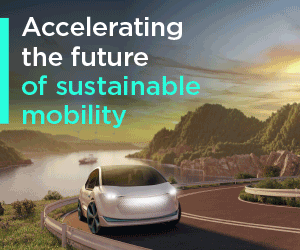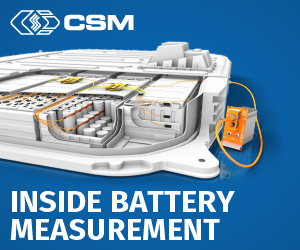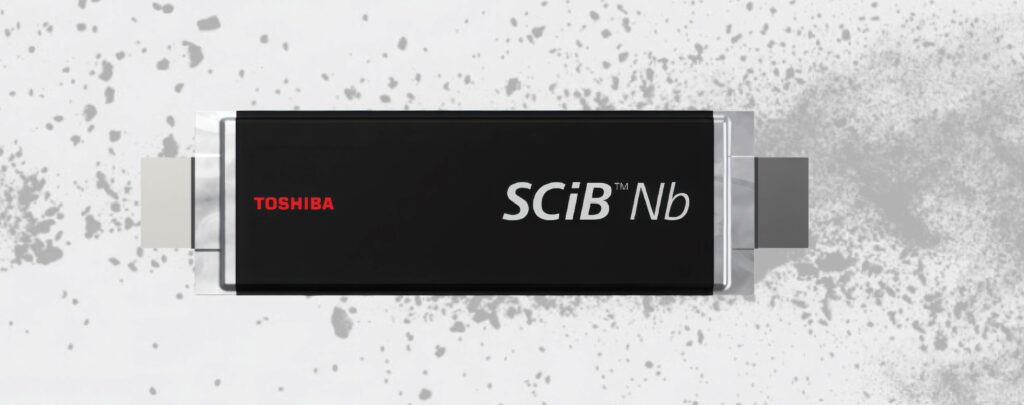NTO’s bus pass
Toshiba has developed a new generation of its fast charging SCiB battery technology, which combines a lithium-ion cathode with a niobium titanate oxide (NTO) anode, writes Nick Flaherty. SCiB Nb has an energy density of 350 Wh/L at 2.3 V while the chemistry minimises the risk of fires and explosions, and it is being used for the first time in an electric bus in Brazil. The cells measure 98 x 280 x 12 mm, or 102 x 310 x 12 mm including the tab and sealing area, and weigh 860 g to give an energy density of 130 Wh/kg.
The SCiB battery maintains at least 80% recovery capacity after 10,000 cycles and charges to 80% of capacity in 10 minutes with a 5 C-Rate charging rate from an input of 2.5kW. It can also can be used in tough environments down to temperatures of -30 C which is not possible with lithium-ion or LFP cells, making it suitable for heavy duty applications such as an electric bus.
The cells have an output power of over 1 kW, which is also key for an electric bus, and a prototype bus is now being developed by Volkswagen along with Toshiba, Sojitz of Japan and Brazil’s CBMM, the world’s leading producer of niobium.
The NTO battery-powered E-bus was developed by Volkswagen Truck & Bus, Brazil, has started testing and demonstration operations at CBMM’s industrial plant in Araxá, Brazil to capture data on the characteristics of the NTO battery and vehicle operation data, and support any adjustments needed for commercialisation.
NTO has twice the theoretical volume density of the graphite-based anode generally used in lithium-ion batteries, which prompted the three companies to sign a joint agreement to explore its potential in June 2018. They subsequently signed a joint development agreement in September 2021 that extended their collaboration to mass production processes of next-generation batteries, mainly targeting application in commercial e-vehicles.
“The use of niobium oxide in the anode of lithium-ion batteries brings special characteristics for this component,” said Rogério Ribas, technical head of battery program at CBMM. “As it hosts lithium at an inherently stable voltage, it provides safer and more efficient operation. In addition, due to its open crystalline structure, which facilitates the intercalation of lithium, it allows a full recharge in less than 10 minutes, without causing damage to the battery. Due to these unique characteristics, niobium-containing batteries are safer and have a much longer lifespan than traditional batteries.”
Toshihiko Takaoka, vice-president of the Battery Division at Toshiba, added, “With CBMM and Sojitz, Toshiba has implemented the practical use of niobium in battery material applications with the development of an NTO battery that recharges quickly and delivers high energy density. We will continue the development work to expand our SCiB battery lineup and business.”
The supply chains for the materials, particularly niobium, is key as this is different from the standard lithium-ion battery manufacturing process. Sojitz is one of CBMM’s shareholders and its sole agent for the Japanese market and it has been building a stable raw material supply system and cultivating applications such as the electric bus development.
Click here to read the latest issue of E-Mobility Engineering.
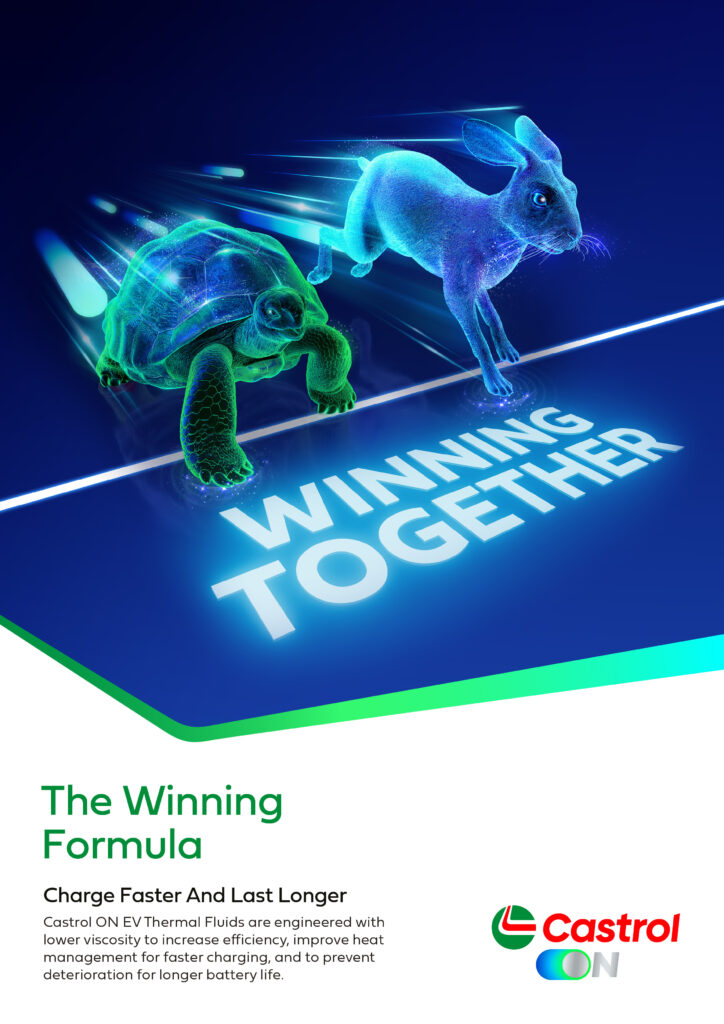
ONLINE PARTNERS






